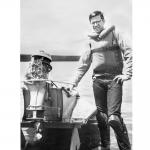From the available pictures and sample of the main carb I have here that says nothing on it as to manufacture I am assuming that the rotary barrel carb on Harrison A and B Alkys were Konig carbs and made by whom, konig or some other supplier? Anyone?
Are these smaller rotary barrel carbs still available amongst Konig or other motor users?


 Thanks:
Thanks:  Likes:
Likes: 





Bookmarks